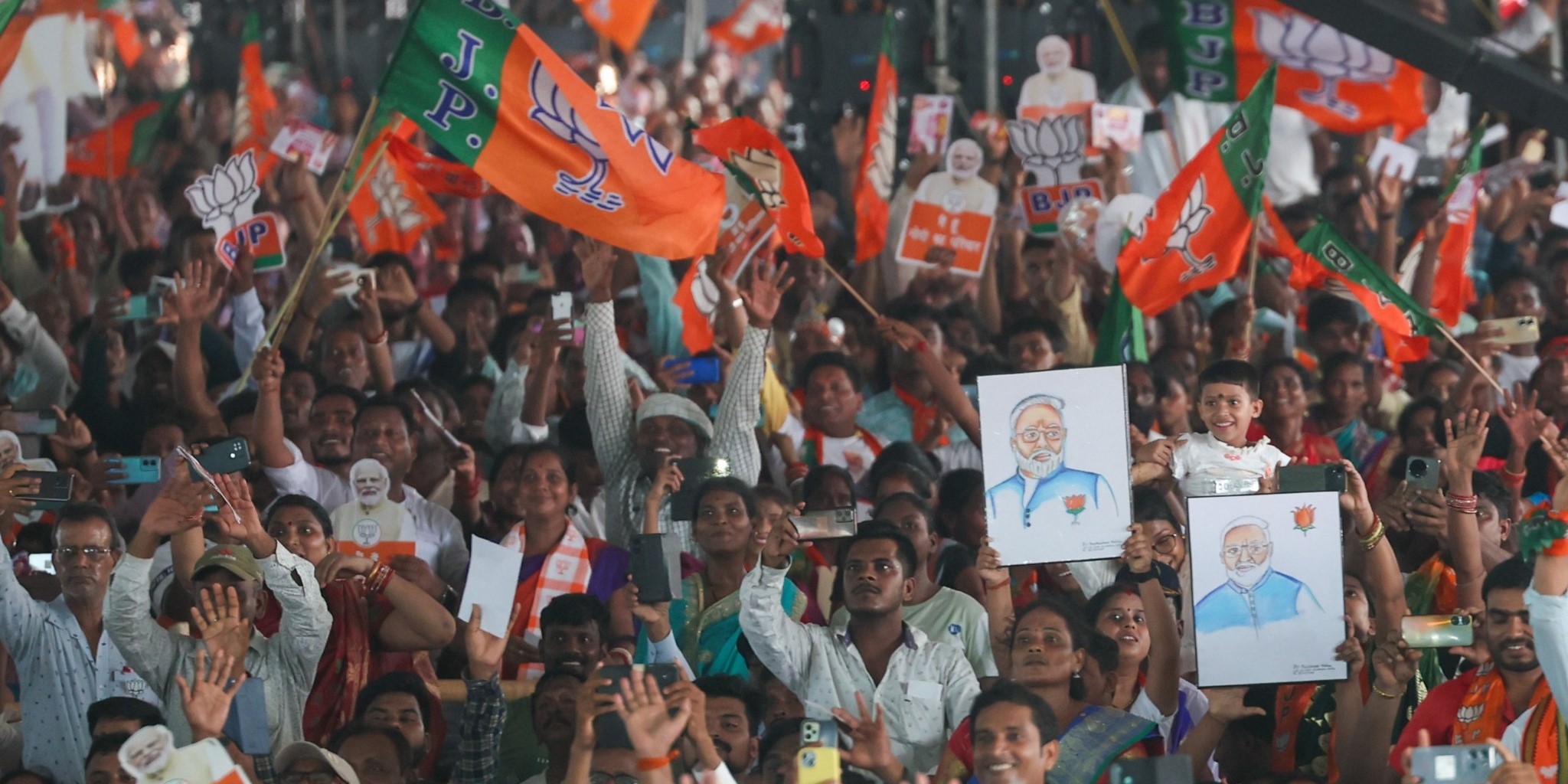In a state whose political arena has been dominated by the UDF and the LDF, can BJP emerge as a formidable third force?

File photo of BJP supporters in Kerala. (BJP4keralam/Facebook)
With the conclusion of the Lok Sabha polls, the burning question that reverberates in Kerala is, can BJP carve out a significant space for itself and emerge as a formidable third front in Kerala?
Traditionally, the political landscape of the state has been a battleground between two dominant forces: The United Democratic Front (UDF) and the Left Democratic Front (LDF).
However, the BJP-led National Democratic Alliance (NDA) is now poised to challenge this duopoly which could potentially shift the state’s political narrative, and could even reshape alliances and strategies in ways previously unimagined.
What gives them the confidence to think the unthinkable is its electoral performance in the Lok Sabha elections.
Several takeaways can fuel BJP’s dreams of emerging as a dominant political force in Kerala.
For starters, the saffron party has for the first time in the state’s Lok Sabha election history secured a seat.
Despite the party securing just a single seat in the Lok Sabha polls, BJP’s impact reverberates far beyond this lone victory.
In a state where the electorate usually oscillated between the UDF and the LDF, the recent results indicate that BJP could emerge as a viable third option.
More strikingly, the party emerged as the frontrunner in 11 Assembly constituencies — all won by the LDF in the 2021 Assembly polls.
Additionally, BJP clinched the second position in eight more Lok Sabha constituencies this time.
According to the saffron party, these developments signal a shift in Kerala’s political landscape.
These developments have sent shockwaves through the political landscape of Kerala, serving as a wake-up call to the established fronts, which had not anticipated BJP’s steady encroachment into their territories.
BJP attributes this newfound support in Kerala to its focus on development, addressing local issues, and exposing the political hypocrisy of both UDF and LDF.
Party leaders acknowledge that while their usual Hindutva agenda is not sufficient to attract Kerala voters, a broader, more inclusive strategy could pave the way for future successes.
“We had a robust campaign strategy centred around the welfare governance under Prime Minister Narendra Modi. We also carefully crafted a narrative to showcase a development-oriented approach and highlighted the stagnation under the traditional rule of the LDF and UDF,” a senior BJP leader told South First.
He added, “We disseminated these messages to the electorates with a focused approach. Right from the grassroots level the message was clear- focus on bringing each electorate to vote for the BJP.”
He also said: “The efforts of organisations like the Rashtriya Swayamsevak Sangh were invaluable.”
The leader also noted that the party leveraged the Central government’s schemes and development initiatives, portraying them as beneficial for the people of Kerala.
According to him, in constituencies like Thrissur, the strategy of assuring a Union minister berth to the candidate paid off.
Despite BJP’s claims, both the LDF and UDF are sceptical, suggesting that deeper factors might be at play.
Political analysts and leaders from these fronts believe that the BJP’s success cannot be solely attributed to the welfare governance narrative.
“One potential factor is the demographic and social engineering employed by BJP,” a Left leader told South First.
“The party might have successfully mobilised certain communities, particularly the Hindu vote bank, which has traditionally been fragmented in Kerala,” he noted.
The leader added, “BJP’s emphasis on Hindutva and nationalism could have resonated with sections of voters who felt underrepresented by the LDF and UDF. At the same time, minorities in constituencies like Thrissur also voted for BJP.”
What both fronts acknowledge is BJP’s meticulous ground-level organisation and booth management, which might have played a crucial role in increasing their vote share.
And this micro-level management might have given the party the space, which they longed for years, to build on.
In short, the unprecedented success in Kerala’s traditional LDF and UDF bastions has given BJP high hopes and instilled in them the belief that they can make further inroads into the state.
With the local body polls and then the Assembly polls looming large over the state, the saffron party believes that the success in Lok Sabha polls marks a significant shift in the state’s political narrative.
(Edited by Arkadev Ghoshal)

Jul 26, 2024

Jul 26, 2024

Jul 26, 2024

Jul 26, 2024

Jul 25, 2024

Jul 25, 2024